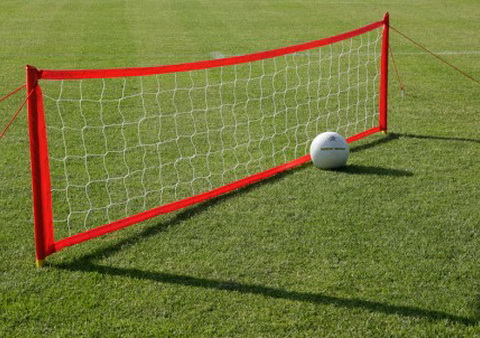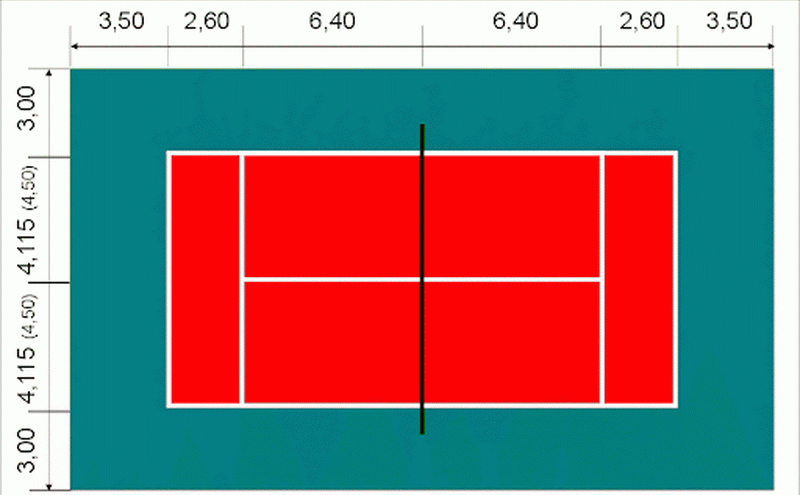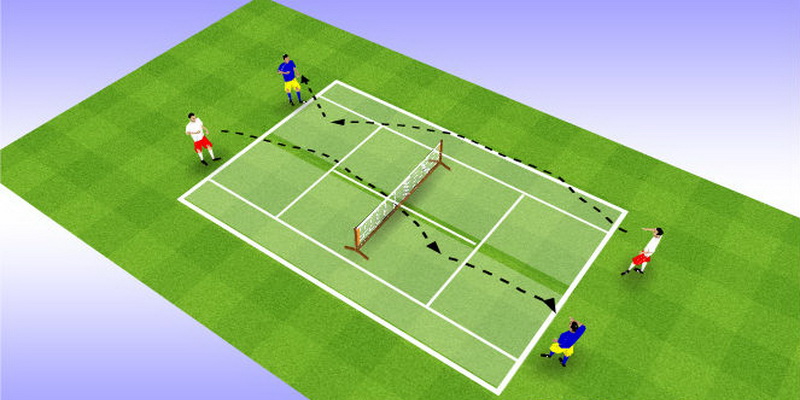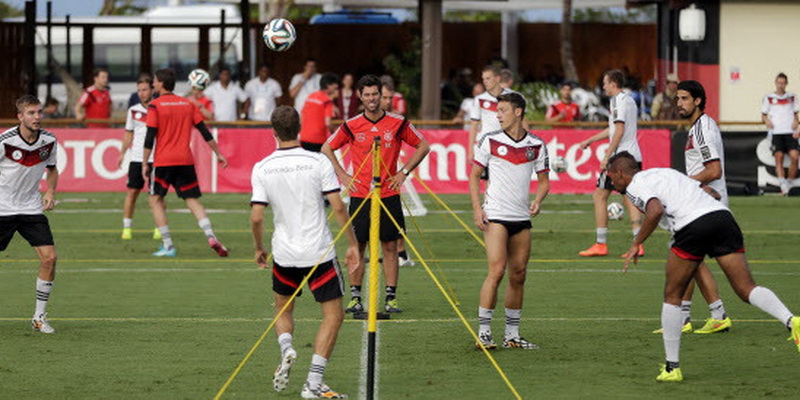
Soccer tennis rules
In a previous article, we discussed the rules of football. Now is the time to learn soccer tennis. Soccer Tennis Rules are the set of guidelines that govern soccer. They include all aspects of how to play football tennis, from how to score a goal to what constitutes an unfair penalty kick. Soccer is played on a field divided into two halves by a line called the “goal-line.”
What is soccer tennis?
Soccer tennis is a game that combines elements of soccer and tennis, played on a smaller court with a lower net.
How many players are typically on a soccer tennis team?
It is commonly played in pairs, so there are usually two players on each team.
What is the objective of soccer tennis?
The objective of soccer tennis is to keep the ball in play using soccer skills and teamwork, and to score points by getting the ball to touch the ground within the opponent’s court.
What equipment is required to play soccer tennis?
To play soccer tennis, you need a soccer ball and a tennis court or a smaller designated area with a lower net.
Are there any specific rules for serving in soccer tennis?
In soccer tennis, the ball is typically served by one team to the other, similar to a tennis serve, but there are no strict guidelines on how the serve should be performed.
Soccer tennis rules (football tennis rules)
In soccer tennis, the ball must be kicked or thrown through one of these lines for it to count as a valid shot; otherwise, it’s considered out of bounds. A player can only use his hands when he has possession of the ball (i. e., while holding onto it with both feet). If you’re not sure whether your team should pass or shoot at any given moment, consult the referee before making a decision.

20 basic regulations of the game
Rule 1:
The game begins with each side taking turns kicking the ball around until they get tired. When this happens, players take their positions along the sidelines according to where they want to receive the next pass. Players may also run upfield if there isn’t enough space between them and the opposing team. Once everyone is ready, the coach gives the signal to begin playing.

Rule 2:
The first person who touches the ball after receiving it from another player scores a point. This rule applies even if the other player was fouled during the act of scoring. For example, if a defender kicks the ball away from him but then accidentally hits someone else, the attacker still gets credit for the goal because he touched the ball last. However, if the defender tried to stop the attack, he would have lost the point.
Rule 3:
One of the most observed soccer tennis rules pertains to the handling of the ball by the goalkeeper. If a goalkeeper catches the ball outside the area marked off by the goalposts, he automatically loses control of it. He cannot touch the ball again unless he recovers it inside the box. In addition, he will lose three points for every minute he spends without touching the ball.
Rule 4:
A player whose foot makes contact with the ground behind the goal-line loses control of the ball and commits a foul. As soon as the offending player regains control of the ball, the defending team receives a free-kick. Free kicks are awarded whenever a player commits a foul within ten yards of either end zone. These penalties usually result in goals scored directly from the spot.

How to play soccer tennis rule 5:
When a player dribbles the ball past several opponents, he earns himself a corner kick. Corner kicks occur when a player passes the ball over an opponent’s head and beyond the reach of defenders. After being taken, the ball becomes dead and no longer counts against the attacking team. It is now possible for the defense to advance the ball toward its own goal.
Rule 6:
When a player takes more than five steps with the ball, he gains possession of it. At this time, the ball belongs exclusively to the player who took it. To regain possession, the original owner must throw the ball back across the centerline. Otherwise, the new possessor keeps hold of the ball indefinitely.
Football tennis game rule 7:
Players may not step on the ball except when passing it. Doing is a breach of the soccer tennis rules and results in a direct free kick. An indirect kick is awarded instead if the offender deliberately tries to injure an opponent.

Rule 8:
To prevent injuries caused by careless handling of the ball, players must wear protective equipment such as shin guards, elbow pads, mouthguards, and helmets. All players must wear shorts, socks, shoes, and shirts made of synthetic material. Goalkeepers must wear special per match.
Rule 9:
To ensure fair competition in a football tennis game, coaches are prohibited from coaching their own players.
Rule 10:
All players must keep their heads upright throughout the match. Shoulders must remain down and elbows tucked close to the body. No part of the arm or hand may extend above shoulder height.
Rule 11:
Players may use their arms to push themselves up out of bounds or to protect themselves from injury. If they do so intentionally, however, they commit a penalty.

Soccer tennis game rule 12:
No player may make unnecessary physical contact with his opponent. A player who does so incurs a yellow card and a subsequent red card as dictated by football tennis rules. When a player is cautioned, he remains in play until the next whistle blows. Suspensions are imposed immediately upon receipt of the second caution.
Rule 13:
Penalty shots are awarded after each goal is scored during extra time. A penalty shot occurs when a player shoots the ball into the net without having touched it first. In addition, the goalkeeper cannot touch the ball before shooting. He may attempt to stop the ball but must wait until the last moment before releasing it.
Rule 14:
The game ends when one side scores three goals or more. This score entitles the winner to claim victory. However, if neither team reaches this total, then the final score will determine which team won.

Rule 15:
If a tie exists between two teams, the result goes to sudden death overtime. Each team receives four minutes to score once. If either team fails to score within those four minutes, the other wins automatically.
Rule 16:
Each team also gets one additional minute to score. Additional minutes could range anywhere from 30 seconds to 90 seconds, depending on how long the stoppages were. During this period, the clock stops whenever there is a stoppage in play. Once again, the winning team claims victory.
Rule 17:
After the end of regular play, the game continues under modified conditions. Teams switch sides for every half-hour interval. Players change positions randomly. There is no limit on substitutions.

Rule 18:
During the intermission, the umpires distribute water bottles to the players. These contain electrolytes to replace what was lost through perspiration. Players may drink freely during breaks.
Soccer tennis rule 19:
After the completion of the third quarter, the teams return to normal playing conditions. Play resumes with the same starting lineup as used previously.
Rule 20:
When the fourth quarter begins, the scoring system changes slightly. Instead of awarding points for goals, the number of corners taken is recorded. After five corners have been taken, the game ends. More about football tennis.
